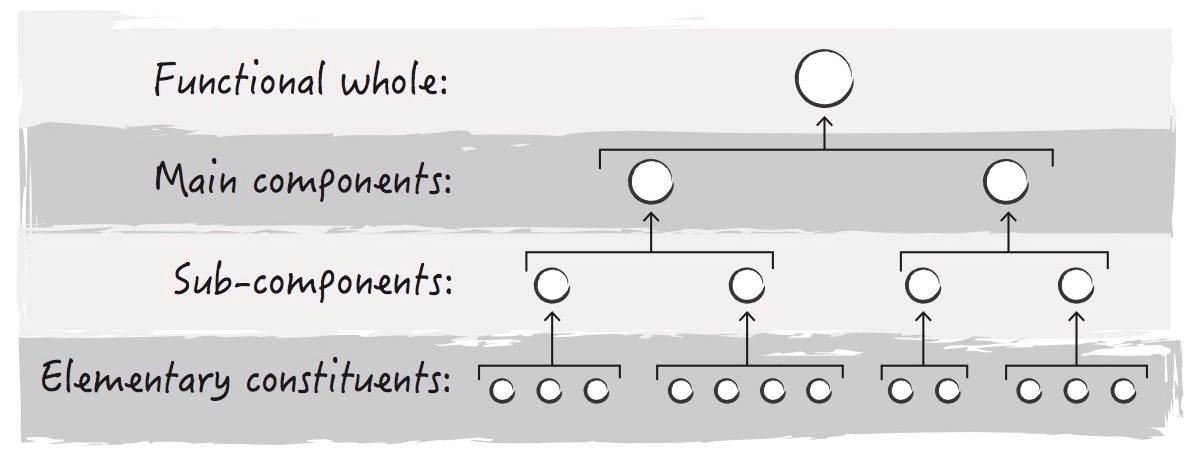 Evolution
Evolution
 Faith & Science
Faith & Science
 Intelligent Design
Intelligent Design
On Functional Coherence — Another Serving of Oracle Soup


This is the fourth installment of my ongoing conversation with theistic evolutionist Hans Vodder about my book Undeniable (for Parts 1 through 3, see here, here, and here respectively). Hans begins this part with the following:
I’d say we might agree — I still have misgivings about the probability calculations (see below). But even if correct, since God is free to beat the odds any way He likes (even by means of chance and natural selection), it seems possible that He could “have produced things like fireflies and horses and humans… within the regularities described by science.”
But let’s talk about oracle soup. Frankly, I wonder if it’s really a good analogy for “the evolutionary explanation of life” (Undeniable, p. 17). While it’s suggestive, oracle soup seems disanalogous to evolution in two important ways.
First, there is the matter of background knowledge. Oracle soup strikes us as implausible because we know what it means to make soup and write instructions. Based on our experience with soup kitchens and patent offices, we rightly believe you can’t ordinarily get soup without a chef or written instructions without a writer. You might say we know the necessary and sufficient conditions for writing instructions in soup under ordinary circumstances, and oracle soup violates these.
However, we know very little by comparison concerning the necessary and sufficient conditions for the “invention” of biological organisms and their features (although I suspect there are plausible evolutionary scenarios for particular cases). Given this disparity in our background knowledge, it seems odd to suggest that the near-certain impossibility of oracle soup working would imply similar certainty with respect to the impossibility of evolution working.
So, the success of the comparison between oracle soup and evolution depends on the strength of similarity between biological organisms and written messages. But how apt is the comparison? We can calculate the odds for written messages relatively easily (see Chapter 9 of Undeniable), but calculating the odds for biological organisms requires treating them as combinatorial objects, and this move is at least somewhat controversial (and is thus my second point of disanalogy).
Given that our ability to make accurate calculations about biological organisms is crucial for the mathematical case against evolution, perhaps we should explore this further?
Even the possibility of agreement is a good thing, Hans — and of course we agreed on some very important things before the conversation began.
Yes, let’s continue to talk soup until we’ve understood each other well.
Oracle soup is an example, not an analogy. That is, I use it in Undeniable as one example from a category of things, with the aim of showing why none of the things in this category can originate accidentally.
The category is defined by what I call functional coherence: “the hierarchical arrangement of parts needed for anything to produce a high-level function — each part contributing in a coordinated way to the whole” (p. 144). Figure 9.3 in the book (reproduced here) illustrates the idea by showing the functional dependencies of a hypothetical whole thing that uses parts within parts to perform its top-level function.

Reproduced from Undeniable; prepared by Anca Sandu and Brian Gage.
Yes, instructions written in soup are very different from life, but my argument is framed around this one similarity: they both exhibit extensive functional coherence. I used wide-ranging examples in the book — digital photographs, the emergency invention that saved the Apollo 13 astronauts, the photosynthetic system in bacteria, etc. — to show why blind processes can’t stumble upon anything at all that exhibits this distinctive trait.
As I said before, the accurate calculations of probability you call for are unnecessary, Hans. For example, you and I agree that instructions can’t appear by accident on the surface of alphabet soup despite having nothing like an accurate probability for this. The easy calculations I walk readers through in Chapter 9 give ridiculously generous upper-bound probabilities, which means the actual probabilities are much, much lower. Because these way-too-generous probabilities are themselves so low as to be effectively impossible, we know the same must be true of the actual probabilities.
The point of Chapter 9 is to show not just that some things are too rare to be stumbled upon by accident but, more significantly, why this must be true for all things that depend heavily on functional coherence. In a nutshell: every aspect of a hierarchical scheme like the one shown must be specially arranged, which means each is likely botched if left to chance. Getting the whole thing right by accident is therefore always fantastically improbable.
I think the controversy you refer to is more ideological than intellectual. In other words, if people could set aside their personal reasons for denying the design of life, I suspect the controversy would evaporate. Indeed, Richard Dawkins, who would very much like to disagree with me on ideological grounds, nevertheless captured the gist of what I’m saying long ago:
You may throw cells together at random, over and over again for a billion years, and not once will you get a conglomeration that flies or swims or burrows or runs, or does anything, even badly, that could remotely be construed as working to keep itself alive.
So, to help us zero in on any remaining points of disagreement, Hans, I have two questions for you:
- Do you agree that living things exhibit extensive functional coherence?
- Do you agree that things with extensive functional coherence are necessarily too improbable to be stumbled upon by accident?
Photo credit: © hollydc — stock.adobe.com.
